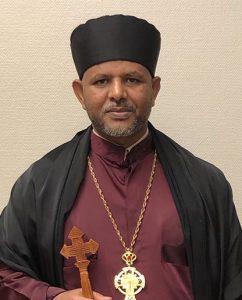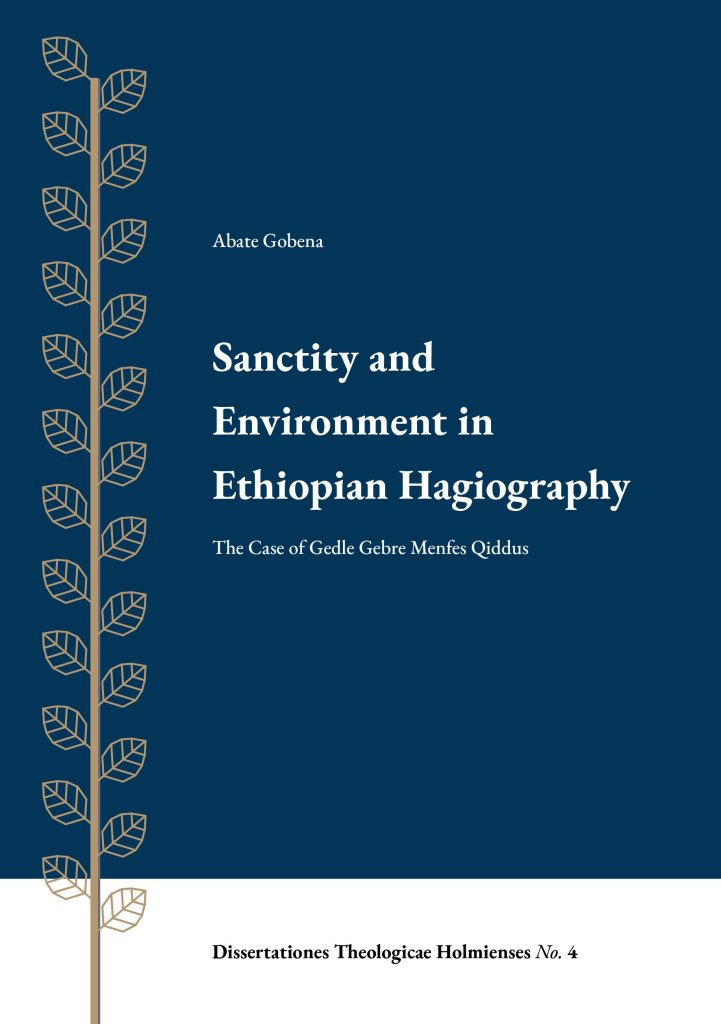
Dr. Abate Gobena successfully defended his dissertation “Sanctity and Environment in Ethiopian Hagiography: The Case of Gedle Gebre Menfes Qiddusat”, for the degree of Doctor of Philosophy in Theology (Eastern Christian Studies: Church History) supervised by Samuel Rubenson, Professor of Eastern Christian Studies, University College Stockholm and Thomas Arentzen, Associate Professor of Church History, Uppsala University.

The event took place on October 31:st, at University College Stockholm. The Faculty examiner, participated online, was Susan Ashbrook Harvey, Professor of Religious Studies, Brown University.
On the examination committee was prof. Petra Carlsson, prof. Ingvild Sælid Gilhus and prof. Stephan Borgehammar.
 Abstract
Abstract
The original forests of the central and northern highlands of Ethiopia are almost entirely confined to the “sacred groves” surrounding the churches and monasteries of the Ethiopian Orthodox Tewahido Church. In Ethiopian tradition sanctity starts from the Tabot on the altar of the church and extends to the outer periphery of the compound. Church forests serve as shade and shelter for the sacred, and are seen as integral parts of the churchyard. The Act of Gebre Menfes Qiddus (GGMQ) is an original Ethiopic hagiographic text. It depicts the life and struggle of the saint in the wilderness of forests and mountains. Hagiographic texts like GGMQ are in Ethiopia not mere historical records, but texts linked to the daily liturgical services that shape and mould the perceptions and actions of their readers and listeners. The aim of the thesis is to analyse how GGMQ presents the relation between the saint and the natural environment in order to see if there is a correlation with how the Ethiopian tradition has preserved the church forests and has considered these to be sacred spaces representing the wilderness. The aim is achieved through a close reading of the text and its intertexts using four selected themes as analytical instruments: ascetic estrangement, coexistence with non-human creation, identification with the angels and reconciliation of opposites. The analysis, and the fact that the GGMQ is one of the most venerated texts, read and heard with great liturgical solemnity, show that there are good reasons to believe that the constant reading of GGMQ has made and makes a significant impact upon the readers’ views on the mutual co-habitation of human and non-human creation and the development of an awareness of the need to preserve the wilderness and non-human creation.
You can download Dr. Abate Gobenas dissertation here
An interview with Dr. Abate Gobena will soon be published at the University College Stockholm webpage.